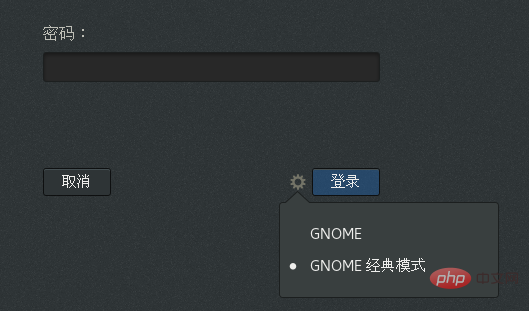what is linux gui
Linux gui refers to the graphical user interface, which is a component independent of the system; Linux usually used for servers does not install a GUI, but operates through a shell, and the installation files of most Linux distributions All come with a GUI, which can be selected on demand in the system installation interface.
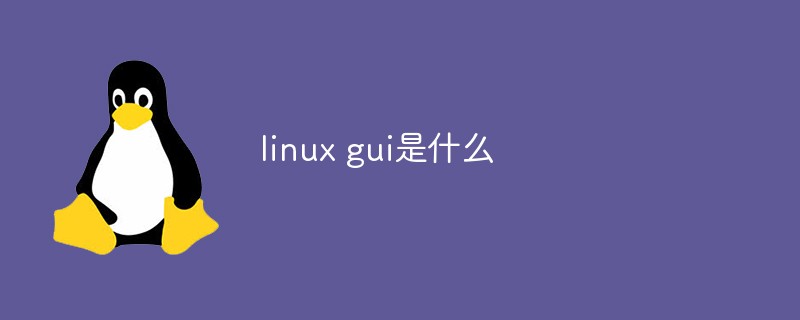
#The operating environment of this tutorial: linux5.9.8 system, Dell G3 computer.
What is linux gui?
Graphical User Interface (GUI)
##Introduction
Linux's graphical user interface (GUI, desktop, desktop environment) is a system-independent component, which may or may not be present
Usually used in servers Most Linux distributions will not install GUI, but operate through shellThe installation files of most Linux distributions have GUI, which can be selected on demand in the system installation interface, or can be installed later through shellRich GUI
It is precisely because the GUI of Linux is independent of the system thatmany rich GUIs appear for us to use, For example, Gnome, KDE, Unity, MATE, XFCE, etc., they can be installed and used in most Linux distributions. Users can install and switch different GUIs in the same Linux to experience until they find their favorite.
/noʊm/) and KDE are the two most popular. Both CentOS and Ubuntu use Gnome as the default GUI
Tuo: Ubuntu gave up Gnome in version 11.04 and used its own Unity as the default GUI (in order to bring Ubuntu into the mobile phone, tablet-mobile terminal field), and then gave up Unity and returned to Gnome in version 17.10. (The major version number of Ubuntu is the year, and the minor version number is the month. For example, 18.04 means the version released in April 2018)
##GnomeMy VMware happens to have three virtual machines: CentOS 6.10, CentOS 7, and Ubuntu18.04.4. Their default GUIs are all Gnome
(the Gnome versions of CentOS7 and Ubuntu18.04.4 are both 3.28.2. See It comes out: using the same GUI on different Linux distributions, the interface is the same)
① Ubuntu 18.04.4(gnome version is 3.28.2 )
Very nice
② CentOS 7(gnome version is 3.28.2)
CentOS7 enters the Gnome classic interface by default. You can click the small gear on the login interface to switch)Gnome classic interface
(Gnome version is 3.28.2 ), press the win key to display the dock bar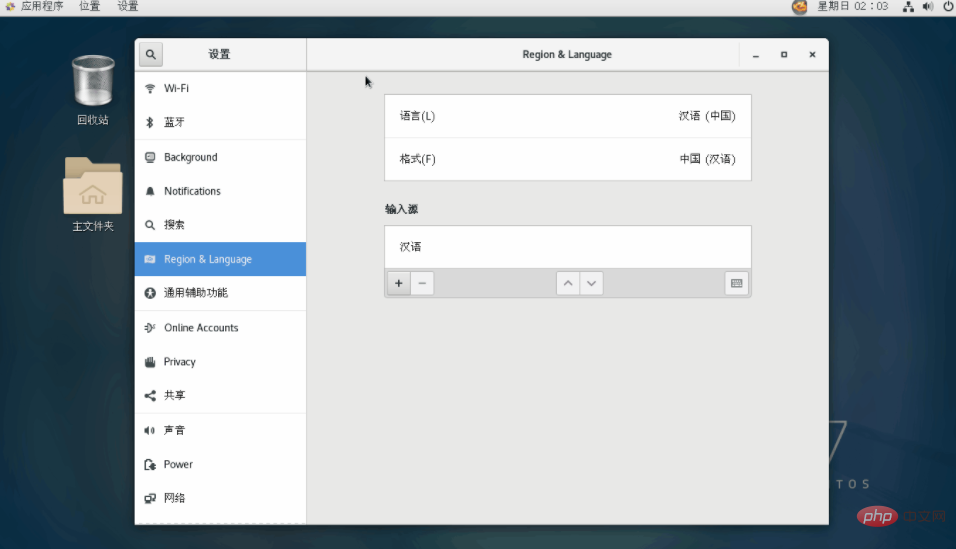 ##Gnome new version interface
##Gnome new version interface
This is the same as Ubuntu above, both It is a new version of Gnome's UI (different from Ubuntu in the following: the desktop does not display the dock bar by default (press the win key or click "Activities" in the upper left corner to display it), there are no icons, there is no option to enter the terminal when right-clicking, and the UI has no animation effects .This should be because the initial settings of Gnome in the CentOS installation package are like this. If the user does not like it, he can set it up as needed)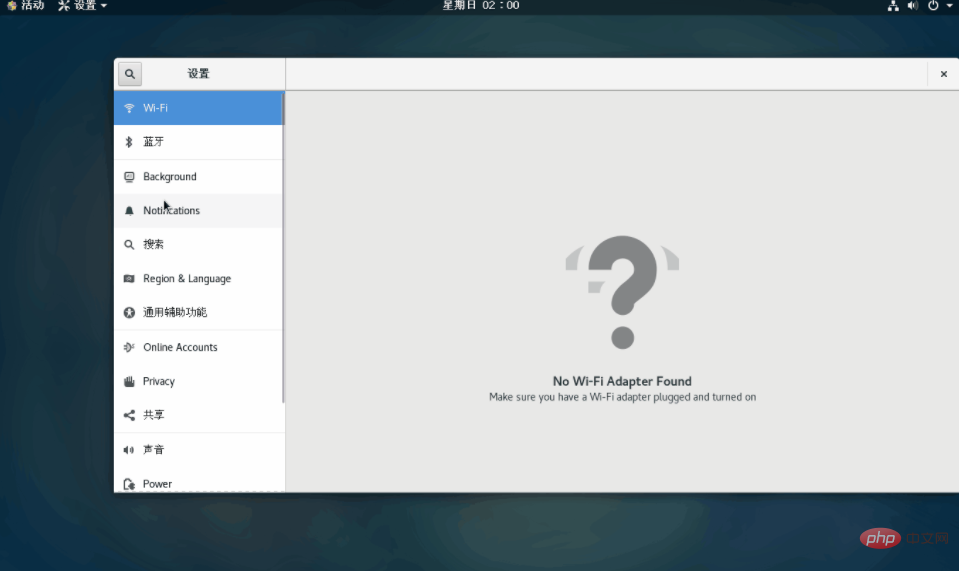 ##③ CentOS 6.10
##③ CentOS 6.10
(View version through gnome-about is 2.28.2)
A more traditional UI, not as designed as the 3.x version
Recommended study: "
linux video tutorial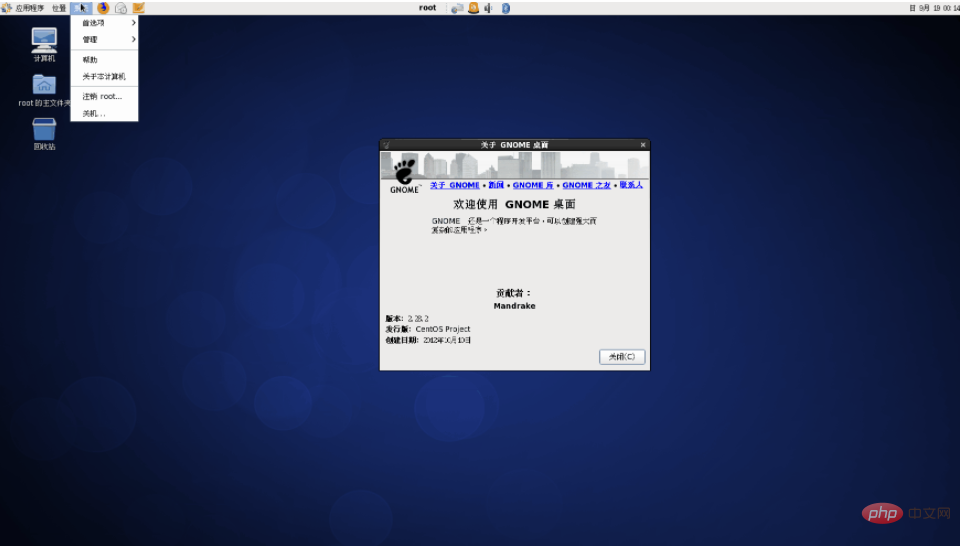 "
"
The above is the detailed content of what is linux gui. For more information, please follow other related articles on the PHP Chinese website!

Hot AI Tools

Undresser.AI Undress
AI-powered app for creating realistic nude photos

AI Clothes Remover
Online AI tool for removing clothes from photos.

Undress AI Tool
Undress images for free

Clothoff.io
AI clothes remover

AI Hentai Generator
Generate AI Hentai for free.

Hot Article

Hot Tools

Notepad++7.3.1
Easy-to-use and free code editor

SublimeText3 Chinese version
Chinese version, very easy to use

Zend Studio 13.0.1
Powerful PHP integrated development environment

Dreamweaver CS6
Visual web development tools

SublimeText3 Mac version
God-level code editing software (SublimeText3)

Hot Topics
 1386
1386
 52
52
 Difference between centos and ubuntu
Apr 14, 2025 pm 09:09 PM
Difference between centos and ubuntu
Apr 14, 2025 pm 09:09 PM
The key differences between CentOS and Ubuntu are: origin (CentOS originates from Red Hat, for enterprises; Ubuntu originates from Debian, for individuals), package management (CentOS uses yum, focusing on stability; Ubuntu uses apt, for high update frequency), support cycle (CentOS provides 10 years of support, Ubuntu provides 5 years of LTS support), community support (CentOS focuses on stability, Ubuntu provides a wide range of tutorials and documents), uses (CentOS is biased towards servers, Ubuntu is suitable for servers and desktops), other differences include installation simplicity (CentOS is thin)
 How to use docker desktop
Apr 15, 2025 am 11:45 AM
How to use docker desktop
Apr 15, 2025 am 11:45 AM
How to use Docker Desktop? Docker Desktop is a tool for running Docker containers on local machines. The steps to use include: 1. Install Docker Desktop; 2. Start Docker Desktop; 3. Create Docker image (using Dockerfile); 4. Build Docker image (using docker build); 5. Run Docker container (using docker run).
 How to install centos
Apr 14, 2025 pm 09:03 PM
How to install centos
Apr 14, 2025 pm 09:03 PM
CentOS installation steps: Download the ISO image and burn bootable media; boot and select the installation source; select the language and keyboard layout; configure the network; partition the hard disk; set the system clock; create the root user; select the software package; start the installation; restart and boot from the hard disk after the installation is completed.
 Centos options after stopping maintenance
Apr 14, 2025 pm 08:51 PM
Centos options after stopping maintenance
Apr 14, 2025 pm 08:51 PM
CentOS has been discontinued, alternatives include: 1. Rocky Linux (best compatibility); 2. AlmaLinux (compatible with CentOS); 3. Ubuntu Server (configuration required); 4. Red Hat Enterprise Linux (commercial version, paid license); 5. Oracle Linux (compatible with CentOS and RHEL). When migrating, considerations are: compatibility, availability, support, cost, and community support.
 How to view the docker process
Apr 15, 2025 am 11:48 AM
How to view the docker process
Apr 15, 2025 am 11:48 AM
Docker process viewing method: 1. Docker CLI command: docker ps; 2. Systemd CLI command: systemctl status docker; 3. Docker Compose CLI command: docker-compose ps; 4. Process Explorer (Windows); 5. /proc directory (Linux).
 What to do if the docker image fails
Apr 15, 2025 am 11:21 AM
What to do if the docker image fails
Apr 15, 2025 am 11:21 AM
Troubleshooting steps for failed Docker image build: Check Dockerfile syntax and dependency version. Check if the build context contains the required source code and dependencies. View the build log for error details. Use the --target option to build a hierarchical phase to identify failure points. Make sure to use the latest version of Docker engine. Build the image with --t [image-name]:debug mode to debug the problem. Check disk space and make sure it is sufficient. Disable SELinux to prevent interference with the build process. Ask community platforms for help, provide Dockerfiles and build log descriptions for more specific suggestions.
 Detailed explanation of docker principle
Apr 14, 2025 pm 11:57 PM
Detailed explanation of docker principle
Apr 14, 2025 pm 11:57 PM
Docker uses Linux kernel features to provide an efficient and isolated application running environment. Its working principle is as follows: 1. The mirror is used as a read-only template, which contains everything you need to run the application; 2. The Union File System (UnionFS) stacks multiple file systems, only storing the differences, saving space and speeding up; 3. The daemon manages the mirrors and containers, and the client uses them for interaction; 4. Namespaces and cgroups implement container isolation and resource limitations; 5. Multiple network modes support container interconnection. Only by understanding these core concepts can you better utilize Docker.
 What computer configuration is required for vscode
Apr 15, 2025 pm 09:48 PM
What computer configuration is required for vscode
Apr 15, 2025 pm 09:48 PM
VS Code system requirements: Operating system: Windows 10 and above, macOS 10.12 and above, Linux distribution processor: minimum 1.6 GHz, recommended 2.0 GHz and above memory: minimum 512 MB, recommended 4 GB and above storage space: minimum 250 MB, recommended 1 GB and above other requirements: stable network connection, Xorg/Wayland (Linux)




